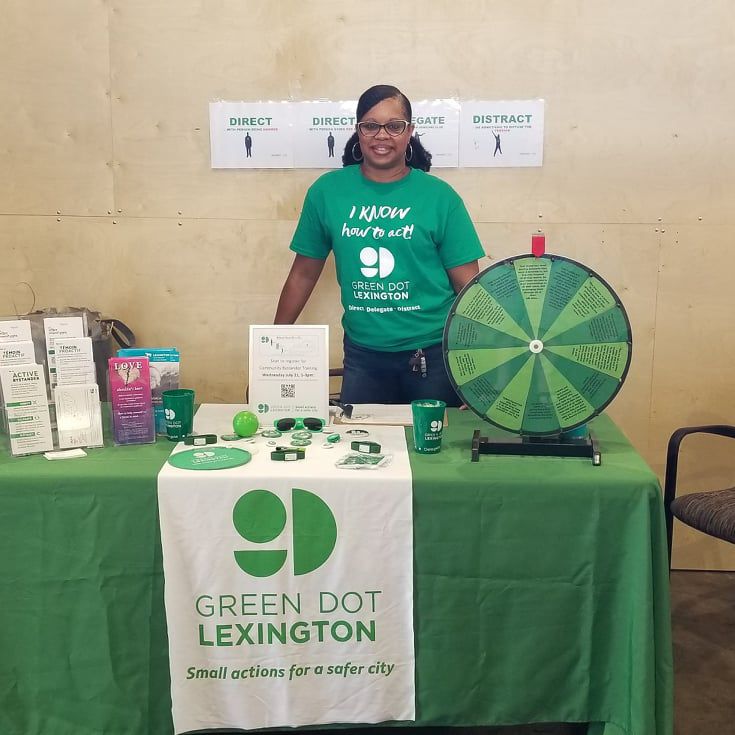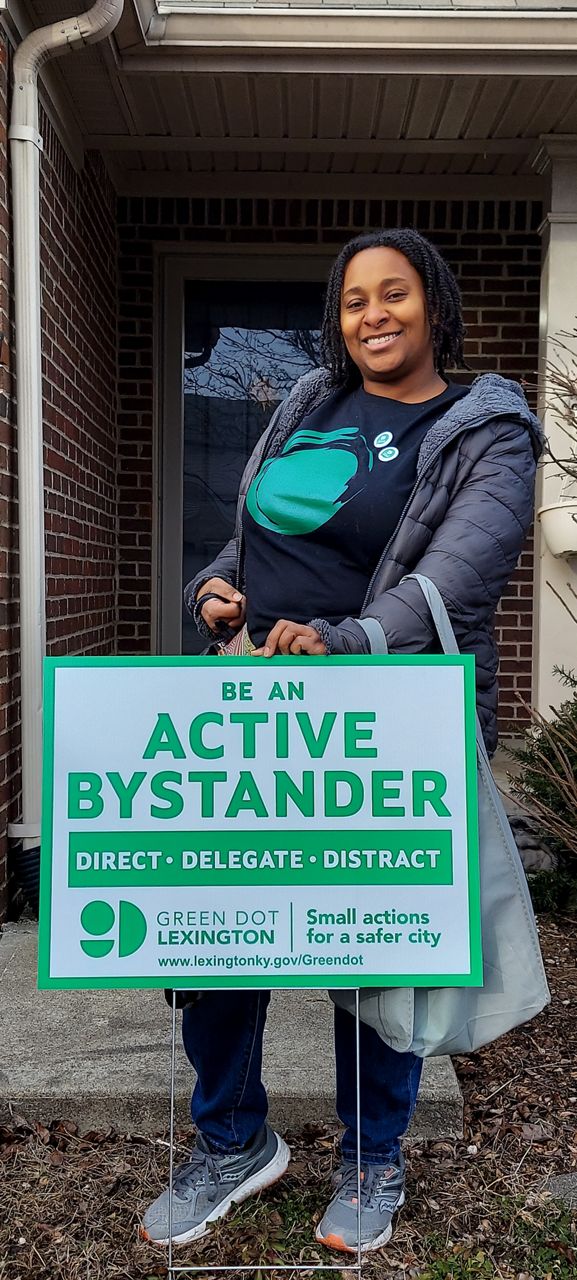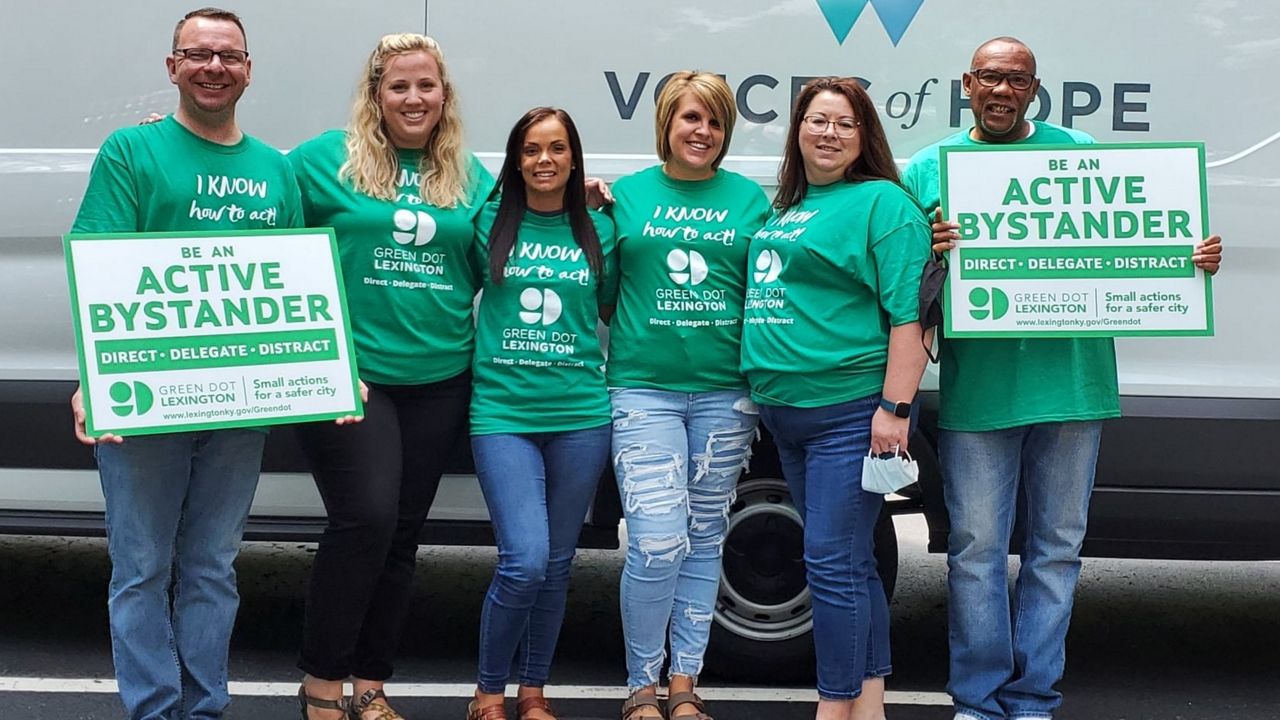LEXINGTON, Ky. — The city of Lexington has ramped up its efforts to curb neighborhood crime and violence by doing more outreach with the Green Dot program.
What You Need To Know
- Program to curb violence began at the University of Kentucky
- Towns, schools and the United States Air Force have implemented the program
- Statistics show methods decrease violence among high school students
- More than 200 people have completed training in Lexington
Green Dot, founded in 2006 at the University of Kentucky, is a nationally recognized violence prevention strategy focused on preventing power-based personal violence — sexual violence, intimate-partner violence, child abuse, elder abuse, bullying and stalking. Green Dot invites everyone to reconsider their role in preventing violence and shifting social and cultural norms. Green Dot sees all community members as potential active bystanders and seeks to safely engage them in violence prevention by empowering them with the tools to do “green dots” — small, individual, and manageable actions and behaviors that express intolerance for violence.
Dawn Runyon, Green Dot Education Program Specialist at Lexington-Fayette Urban County Government since 2019, was present earlier this month when Lexington Mayor Linda Gorton declared August 2021 as Bystander Awareness Month.

“We officially launched it this past year,” Runyon said. “Because of COVID, of course, and our inability to be out in the community, pretty much everything we've done has been virtual. But we now are just shy of 200 individuals who have gone through the bystander training virtually and received recognition as active bystanders in the program — that’s mainly what we do.”
Rhonda Jackson, 37, is a middle school life skills and consumer sciences teacher who has been heavily involved in Lexington’s Green Dot program since its inception. Jackson said she thinks the virtual meetings are a “huge step in the right direction” for Green Dot to grow in Lexington and Fayette County among government staff and in opening it up to the community.
“COVID kind of shut life down, but I think in this area, it was helpful because they were able to offer virtual sessions and with those you can meet more people where they are. You're not limited by just location by having to come in a certain building at a certain time physically,” she said. “I may have been running kids around that day. And so, I was able to take that time, maybe while I'm waiting on the child’s music lesson or something like that. I could join in on the program virtually and still get trained and get those tools and resources.”

Jackson said she sees Green Dot as the best way to do something positive in her community.
“It's always important for people to understand that we can all do something,” she said. “We can't just stand on the sidelines expecting somebody else to do something, or expecting things to change if we're not willing to get involved ourselves. When I heard about the Green Dot program, I said, ‘This makes perfect sense.’ I wanted to give myself more skills, but also skills I can use when I'm teaching my students to help them feel more equipped to handle different situations that arise as well.”
Jackson said Green Dot provides the tools and training that allow a person to de-escalate a potentially dangerous situation.
“This is our community, she said. “We're all supposed to be here for one another anyway, and this is just a part of it. If somebody is not doing right, it should be OK for someone in the community to step up and say, ‘Hey, you know, this is not OK,’ or just help other people out of uncomfortable situations. We're all in this together.”
There are several ways to get involved in Green Dot. People may sign up for Green Dot’s next Open Community Training scheduled for 10 a.m. Saturday, Aug. 28; challenge others to #KnowHow2Act by inviting them to participate in the open community bystander training; and signing the Green Dot bystander pledge to show commitment to helping end power-based violence in your community.
Runyon said being involved in Green Dot is personal to her, as she is a survivor of abuse she endured as a child and young adult.
“The thing that made the difference for me was a bystander — someone who stepped in and helped me when I couldn't do it for myself,” Runyon said. “That's what attracted me to this program and makes me want to bring it into our community. Because I know sometimes it makes a difference when everybody around you ignores it, or acts like it's normal. It's hard to seek help. I want to see this change. I want to see children not have to go through and live what I went through. Frequently, it goes on because no one says anything. We've got to find a way to make that business our business, not look the other way and really try and change the climate.”
Green Dot programs are in towns and schools across the country and is even the program-of-choice of the United States Air Force. Runyon said a five-year study in high schools that implement the program show as much as a 50% reduction in school bullying and dating violence rates.



